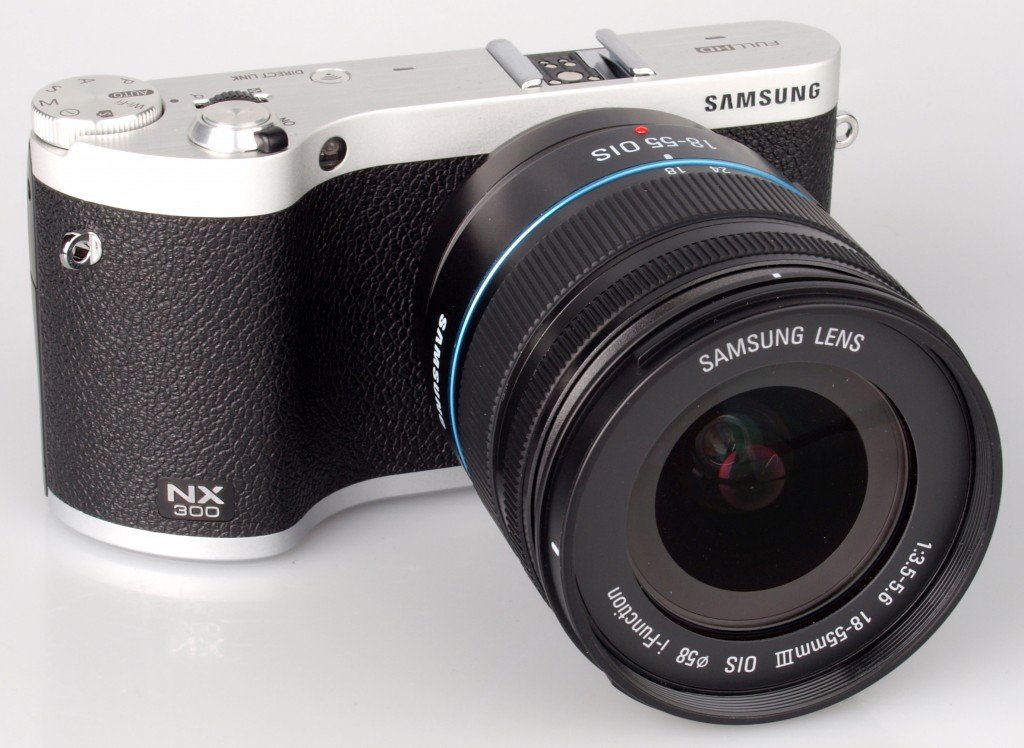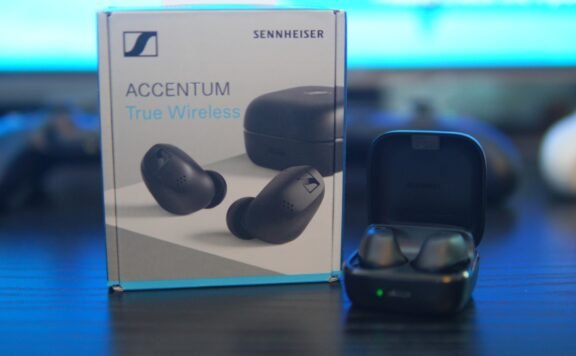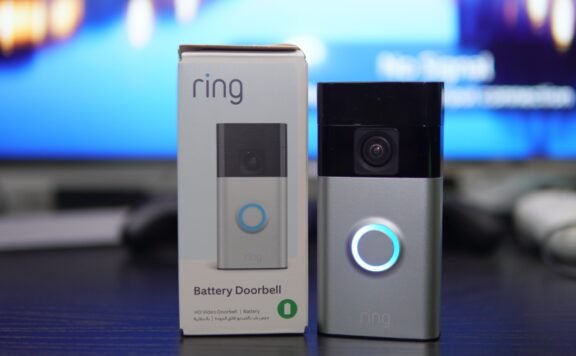The Samsung NX300, is one of the top models in Samsung’s NX range of compact system cameras (or micro four thirds). The NX300 features an advanced 20.3-megapixel APS-C CMOS Sensor that accompanies Phase detection AF to ensure you get high-quality images and lifelike colours whenever you go on a shooting spree. It rivals similar micro four thirds such as the Sony NEX, the Olympus PEN, and Panasonic G range of cameras.

The NX300 looks cool with its a brushed metal top plate and a leather-textured grip providing some retro chic from the front. At the back of the camera is a delicious 3.3-inch articulated AMOLED touchscreen that makes it look bang up to date from the back. The NX300 is however, a bit bigger and heavier than some of the competing cameras such as the Sony NEX-5R.
Holding the camera feels right with its expanded ISO range of 100-25,600. It also accompanies 1080p HD movie recording, built-in Wi-Fi connectivity, 8.6fps continuous shooting, 1/6000th shutter speed, 3D Panoramas and Samsung’s unique i-Function lens.
What the i-Function button does is it allows users to control the NX300 by scrolling through five manual settings on compatible lenses. The feature also allows users to use the focus ring to change the parameters for each setting. The NX300 also comes with a special i-Scene lens priority mode, which allows users to adjust the depth-of-field and use the intelli-Zoom function.
The NX300 is currently available in black, white or brown, and comes with either the 20-50mm lens or the 18-55mm OIS III lens. The review unit we received from Samsung came in brown colour and accompanied a 18-55mm OIS III lens. The only let-down was the blocky plastic design of the detachable flash unit that comes inside the box.
Features-wise, the NX300 scores top marks. All the conventional photographic controls that we’d expect are here, as are new-fangled features such as HDR, sweep panorama and creative filters, including Samsung’s Best Face mode. The Best Face feature allows you to capture five frames in a group portrait shot. It then lets you choose the best pose for each person in th shot, before it stitches a composite image together.
The NX300 has also got Wi-Fi built-in, which you would say is almost standard on most new cameras. However, the features it offers are amazing – even more than most cameras out there on the market. In addition to regular emailing, remote shooting, and social sharing (Picasa/Youtube) features, it also automatically checks for firmware updates, allows sharing to Android and iOS phones and tablets, and offers cloud backup, courtesy of Microsoft’s SkyDrive. The camera however is not compatible with Dropbox.
Though the specs are impressive, what about the performance? Well, the NX300 lives up to the promise of those impressive specs, by turning in a decent performance in our tests. The NX300 worked quite well in almost all shooting conditions, and delivered beautiful images without noise, even in low-lit situations. The in-camera JPEGs remained crisp and clean with no hint of heavy handed compression, too.
On the whole, the Samsung NX300 takes great photos, with just a few small issues to note. The NX300’s auto white balance offers reliable result and faithful colours, albeit with very little signs of any colour cast. The Samsung NX300 is a great improvement on previous NX models and is a good option for anyone stepping up from a compact. In addition to excellent image quality, the improvements to performance will allow the NX300 to challenge most compact system cameras on the the market.
Price: AED 2,699
Specifications:Image Sensor: 20.3 effective megapixel APS-C CMOS
IS: OIS mode is only provided on 2D shooting mode
Display: 3.31-inch AMOLED with a Tilt Touch Panel
ISO: Auto, 100, 200, 400, 800, 1600, 3200, 6400, 12800, 25600
Video: MP4 (Video: MPEG4, AVC/H.264, Audio: AAC) 1920×1080, 1920×810, 1280×720 , 640×480, 320×240 for Sharing
Other Features: 3D still image and video capturing, Wi-Fi Connectivity, AutoShare, Cloud, Email
Bundled software: iLauncher, Adobe Lightroom
Storage: SD, SDHC, SDXC, UHS-1
Weight: 280-gms (without battery)





